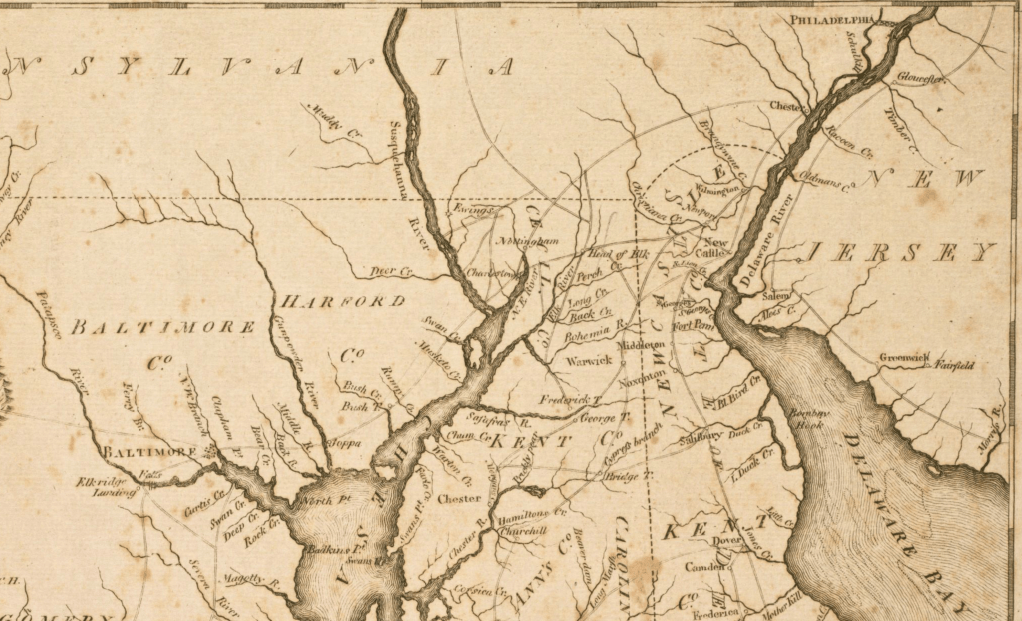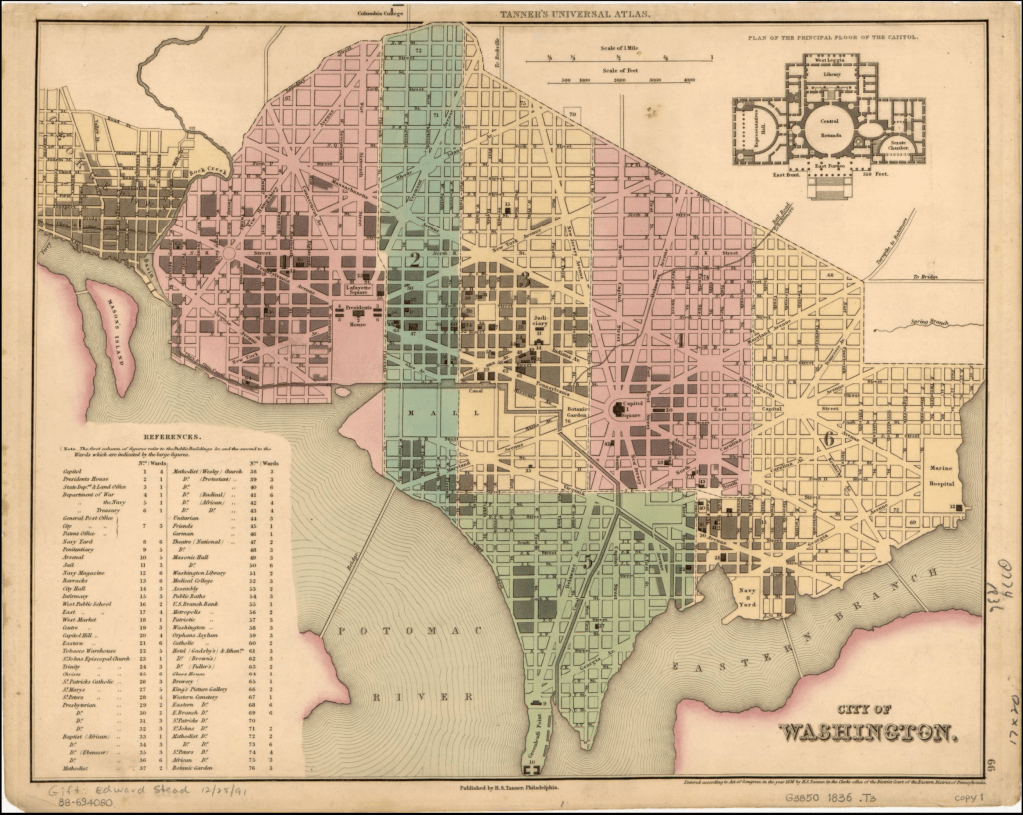Known Information
Susan and Isaac Johnson are the parents of Cassandra Johnson who married Bruce Dent in 1830.
Sources
Provine, D. S. (1996). District of Columbia free Negro registers, 1821-1861. Bowie, Md: Heritage Books.
Rogers, H. H., & District of Columbia. (2007). Freedom & slavery documents in the District of Columbia. Baltimore, MD: Gateway Press..
Land Record, Elizabeth Stump to Margeret Robertson, HD R 547 | mdlandrecs.net
A Biographical Dictionary of the Maryland Legislature 1635-1789 by Edward C. Papenfuse, et. al., pg 483 | Maryland Sate Archives
Maryland Genealogical and Memorial Encyclopedia, pg. 644-645 | ancestry.com
Maryland Historical Trust | Stafford Farm | John Stump House
Race & Slavery Petition Project, Petition 20981106 | Digital Library on American Slavery
National Register of Historic Places Registration Form, Swansbury
The Baltimore directory and register, for the year 1816 | archive.org
Susan and Isaac Johnson registered their children, Jacob and Charles Johnson, as free in the District of Columbia on 15 September 1827. In Provine’s Book, she indicates that the Susan (Suckey) Johnson was manumitted in 1804 by Elizabeth Stamp [sic] of Harford County, MD, and that she is the wife of Isaac Johnson who was manumitted in 1818, two years after Archibald Johnson purchased him from Samuel Jay. The record also lists her children: Archibald (1810), Isaac (1812), Cassandra (1817), Mary Ann (1819).
Susan Johnson
Susan Johnson was enslaved by the Stump family, a large commercial family in Harford County, Maryland. The patriarch of the family had come from Prussia in the early 1700s and purchased land in Cecil County, Maryland (across the Susquehanna River) and his sons came to Harford County, MD.
Elizabeth Stump of Harford County, Maryland
Harford County is located 25 miles northeast of Baltimore along the Susquehanna River and the Chesapeake Bay. It is between Philadelphia and Baltimore, both port cities during the Colonial and Federal period. Originally, the European Colonists created tobacco plantations, similar to southern plantations, however, the crops shifted so that by the end of the 18th century, the farms had shifted to growing wheat and corn, which was shipped to Europe and the West Indies from Baltimore and Philadelphia.

In the 1790s, Elizabeth, the daughter of Josiah William Dallam, a wealthy landowner who enslaved people, married Herman Stump, one of the grandsons of the original patriarch. Her husband, Herman, was engaged in trade with his brothers, including John Stump, and they shipped flour produced at Stump Mills in Harford and across the mid-Atlantic to England and the West Indies. The map shows the location of one of these mills on Deer Creek along the Susquehanna, upstream from Havre de Grace.

Herman Stump died in 1801, leaving Elizabeth Stump a wealthy widow. By 1804, she married again, to Abraham Jarrett. Prior to her marriage, she put her land and wealth into a trust held by her friend Margaret Robertson/Robinson. At the same time, she legally freed the people she enslaved, including Susan (Suckey) Johnson. In the petition, she that did so “believing freedom to be the inalienable right of all human beings”. While she stated this, her husband continued to enslave people. Despite her stated lofty ideals, it is possible to have a more cynical view of her actions. Prior to her second marriage, she placed her own wealth into a trust, suggesting that she was financially savvy, as her soon-to-be husband had debts that she wanted to protect her fortunes from. It could be, with the shift in economy, it was not longer economically viable for her to enslave people, as she would be taxed and she no longer had the lands on which to compel their labor.
William Taylor, of Havre de Grace
Havre de Grace was situated on the mouth of the Susquehanna. Built in the late 1780s, it came very close to be chosen as the national capitol. Built to be a booming trade town, it never grew to compete with either Baltimore nor Philadelphia. William Taylor lived in Havre de Grace, where he engaged in manufacturing. A 1818 court case names William Taylor as a blacksmith.
In 1820, he vouched for Susan’s freedom, saying that he knew her “from his first knowledge of things”. The 1810 Census lists Wm Taylor living on page 826 where many of the names on this and the following pages indicates that he lived in a neighborhood with a large population of Black families with free status. Susan (Suckey) is not listed among the heads of households. However, his testimony suggests that she lived in Havre de Grace for a period of time before moving to DC.
Isaac Johnson
In the meantime, while Susan was released from captivity in 1804, Isaac Johnson was enslaved until 1818. In 1818, Archibald Johnson, in consideration of one dollar, manumitted Isaac Johnson, whose he purchased from Samuel Jay about two years ago (1816).
Samuel Jay
Samuel Jay, like the Stumps, was engaged in commerce in Harford County. He owned 1000 acres near Swan Creek and in addition to a nail factory and other property. He married into the prominent Griffith family of Harford and served on the Board of Commissioners in the early 1800s with a Roger Boyce.
Jay and Boyce were also business partners; in 1799, Boyce and Jay entered into a partnership that revolved around a nail and anchor manufacturing factory in Havre de Grace. This partnership resulted in Boyce taking on a $3000 debt, and Jay controlled the promissory note. When Boyce died intestate without having repaid the debt, Jay asked the courts to compel Boyce’s widow to sell property to cover the debt.
The Chancery Court documents for this case name the people Boyce enslaved and whose captivity was transferred to Jay. The list not only includes an Isaac who is roughly the right age to be the Isaac Johnson married to Susan, but also the some of the names of the other individual slaves are names used by Isaac and Susan to name their children: Abraham, Charles, Jacob. This suggests a familial relationship between the people enslaved by Boyce and Isaac Johnson.
The Chancery Case was settled around 1815-1816 which is consistent with the timeline that Archibald Johnson purchased Isaac from Samuel Jay two years prior to 1818, when he manumitted him.
The Bill of Sale is documented in the Freedom and Slavery Records of DC:
Isaac Johnson (half brother to Archibald Johnson) Bill of Sale was recorded 16 January 1816, Samuel Jay sells to Archibald Johnson a free Mulatto of Baltimore, Harford County, Maryland, for $200 a slave and half brother of Archibald Johnson, named Isaac Johnson age about 45 years, Signed on 30 Dec 1815 by Samuel Jay
| Name | Age |
|---|---|
| Abram/Abraham* | 14 |
| Charles* | 16 |
| Denbugh | 45 |
| Dick | 35 |
| Frank | 15 |
| Harry | 15 |
| Isaac* | 15 |
| Isaac* | 35 |
| Jack* | 22 |
| Jacob/Big Jacob* | 35 |
| Jacob* | 17 |
| Thomas | |
| Will | 45 |
| William | |
Archibald Johnson
In the late 1700s, two Archibald Johnsons lived in Harford County. Yet, by 1810, while an Archibald isn’t enumerated in the Harford County census, there is a Archd Johnson living in Baltimore Ward 1. The Baltimore directory and register, for the year 1816 lists Archibald C. Johnson living as a tailor at the corner of St. Paul’s Lane and Chatham street.
In the 1820 census, two years after Archibald purchased Isaac’s freedom, both an Archibald Johnson and an Isaac Johnson are enumerated in Washington DC, in Ward 4. Archibald Johnson is over 45 years old and lived with a free Black male 14-25, a free Black female age 14-25, 1 female under 14 and 2 enslaved females; living nearby, is Isaac Johnson.



